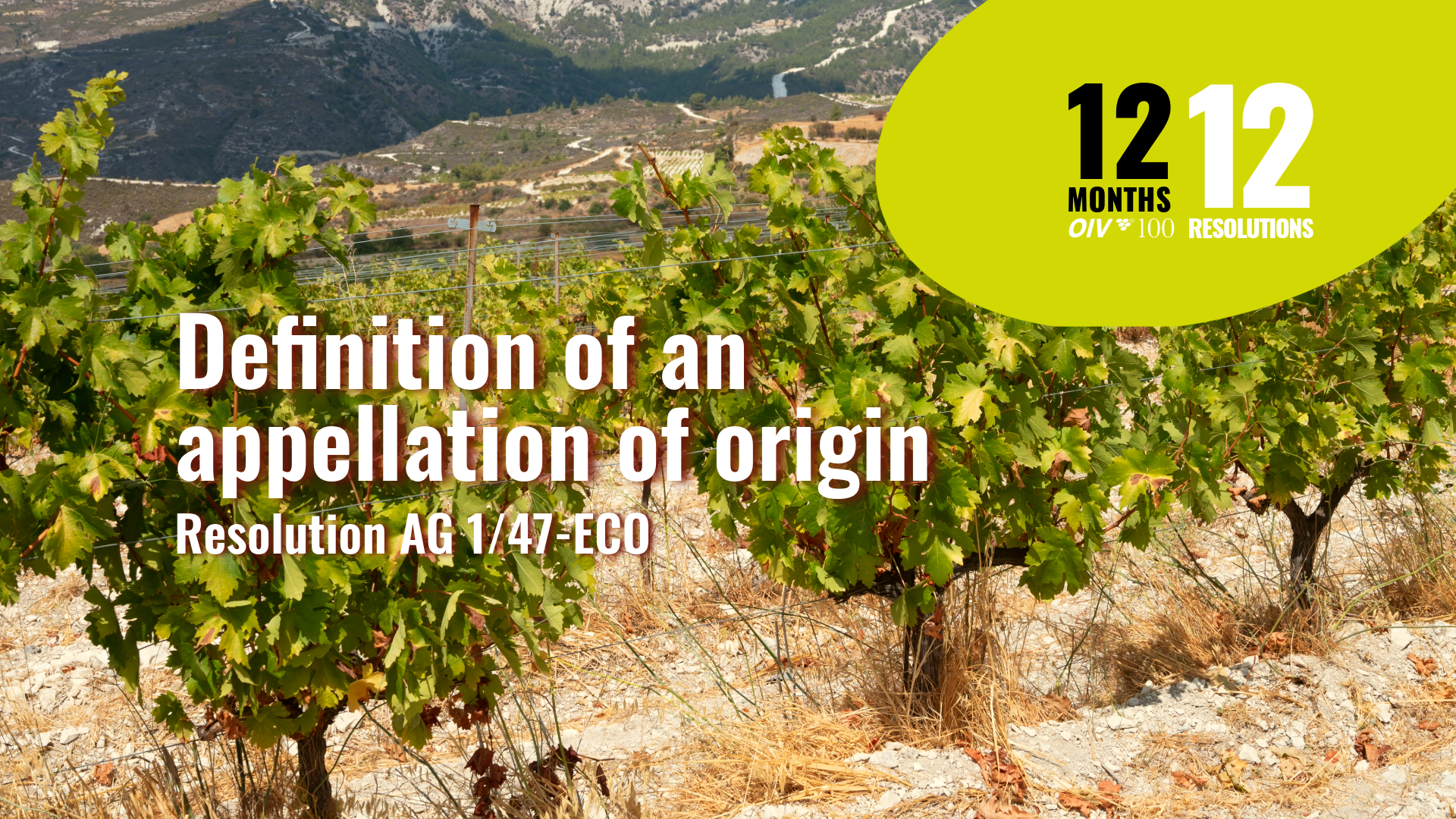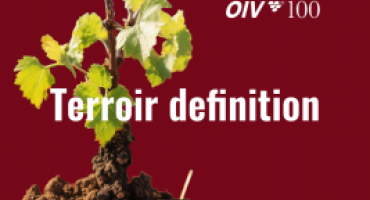The OIV centenary celebrations continue this month, highlighting the definition of an appellation of origin—a fundamental resolution first adopted in 1947 and still highly relevant today in accordance with international agreements.


The rising importance of protecting geographical origins
The wine sector was confronted to a wave of fraud in the 19th century, leading to the writing of the Paris Convention for the Protection of Industrial Property1. This Convention, originally signed on 20 March 1883 and regularly updated, founded international industrial property law, including the protection of appellations of origin2.
In 1908, at « Congrès International pour la répression des fraudes alimentaires et pharmaceutiques », the definition of wine was supplemented by a reference to geographical origin: « The only wine entitled to the name of a cru, country or region is that which comes exclusively from it”.3.
Over the years, a consensus emerged, with the Paris Conference in 1923 underlining the importance of fighting fraud4. The creation of the Office International du Vin (OIV) in 1924 gave concrete expression to this fight, entrusting the OIV with the task of defining the appellation of origin in accordance with the Arrangement of 29 November 19245.
The first definition
In 1947, the OIV adopted its first definition of an appellation of origin with the resolution AG 1/47-ECO. This definition specified that an appellation of origin must comply with the following criteria6:
- Be established by custom and established reputation.
- Have a reputation determined by natural factors such as climate, soil type and grape varieties, making it possible to delimit an area of production.
- And a reputation determined by human factors, such as methods of cultivation, vinification and distillation.
The OIV also adopted a definition of geographical indications in 19797.
The recognition of international protection
Nevertheless, this resolution would only be effective if national laws applied it, allowing international protection8. Since the creation of the Office, Pierre Railhac (Doctor of law and lawyer at Montpellier Court of Appeal) underlined the need to adopt protective measures to guarantee the origins9.
Following this definition, the OIV adopted various resolutions to improve the protection of appellations of origin. It is essential that the appellation of origin be considered as a property right 10, and that it not become generic and fall into the public domain11. It must also be protected against homonyms by means of an appropriate definition12 and must not use references to relocation or words referring to another appellation of origin13.
During the 20th century, the OIV respected one of the objectives set out in its founding text : the protection of appellations of origin14. Following this, international agreements became aware of the importance of this protection and adopted provisions relating to appellations of origin, such as the WTO15 and WIPO16.
With these international definitions recognised by many countries, the OIV aligned itself with this trend towards international protection by updating its definition of appellations of origin and geographical indications17. In 2021, this resolution reaffirms the criteria established in 1947, particularly about human and natural factors, recognition by custom and established reputation, and the delimitation of geographical areas for appellations of origin, in accordance with internationally recognised standards.
1 Paris Convention for the Protection of Industrial Property of March 20, 1883, as revised at Brusells on December 14 1900, at Washington on June 2, 1911, at The Hague on November 6 1925, at London on June 2, 1934, at Lisbon on October 31, 1958, and at Stockholm on July 14, 1967, and as amended on September 28, 1979.
2 Article 1st 2) of Paris Convention for the Protection of Industrial Property of March 20, 1883
3 Congrès international pour la répression des fraudes alimentaires et pharmaceutiques, Genève 8-12 septembre 1908, Société Universelle de la Croix Blanche de la croix blanche, Actes pp. 62-66 https://archive.org/details/b28098845
4 P. Railhac, L’Office international du vin, 1928, p.92
5 Y. Juban, L’Office international de la vigne et du vin et sa doctrine au travers de ses résolutions, Faculté de droit et de science politique d’Aix-Marseille,1987, p.46.
6 AG 1/47 – ECO , Définition de l’appellation d’origine
7 C 8/79 - ECO, Protection des indications géographiques
8 P. Railhac, L’Office international du vin, 1928, p.92
9 P. Railhac, L’Office international du vin, 1928, p.94, 96 et 97
10 AG 3/46-ECO, Politique de la qualité du vin, de son authenticité jusqu’à sa vente au consommateur et de la protection des appellations d’origine – Notion d’appellation d’origine
11 C 8/79 - ECO, Protection des indications géographiques
12 ECO 3/99, AOR/IGR and homonyms
13 AG 7/81 – ECO, Appellation d’origine et indication de provenance : Application pratique
14 Agreement Establishing the International Organisation of Vine and Wine, article 2.2.c) (ii)
15 Agreement on Trade – Related Aspects of Intellectual Property Rights (TRIPS- Annex 1c, part II, section 3, article 22, 1) of the Marrakesh Agreement Establishing the World Trade Organization in 1994)
16 Geneva Act of the Lisbon Agreement, article 2 (1) (ii), 2015
17 OIV-ECO 656-2021, Update of the definitions of geographical indication and appellation of origin


